Animated Short Film Structure Guide
Breaking Down the 8 Genres of Animated Shorts
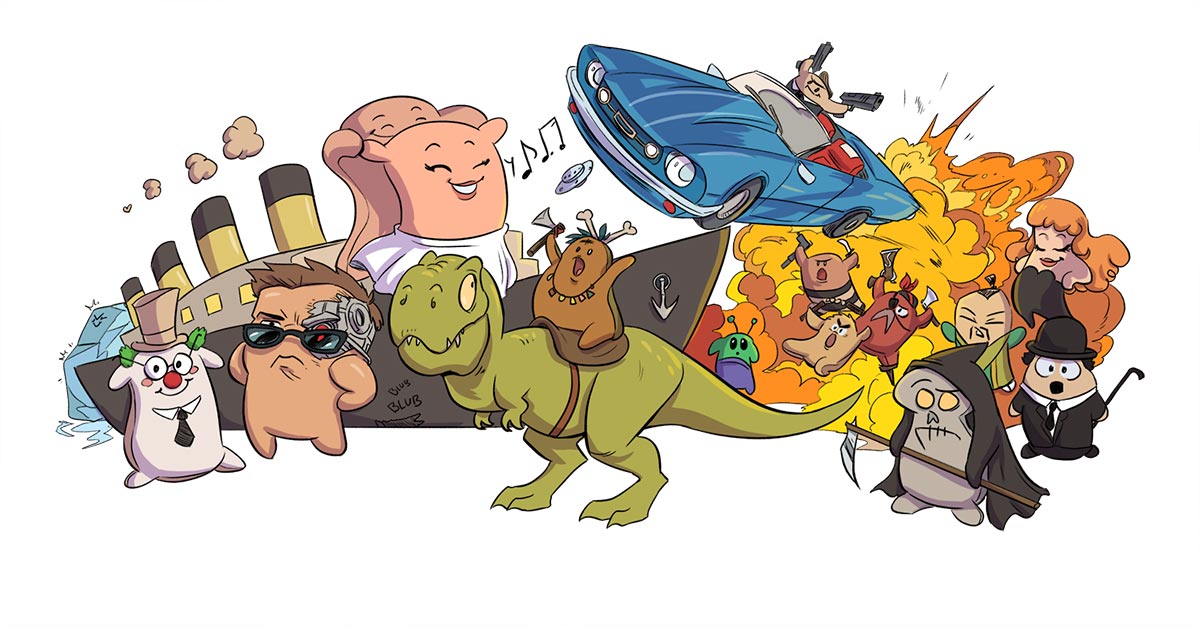
This guide was created as a result of a personal study I have done, watching and analyzing the difference and similarities of every Academy Award nominated animated short film in the last 20 years.
Through this study, I have found that there are 8 archetypes (or genres) short films usually fit in.
With sharing these results I hope to help filmmakers in the process of making their own animated short. Either by focusing them on the type of film they are making, (and then tightening it up by reading our definitions and watching similar films) or inspiring new ideas from our breakdowns of the different genres.
1. The Quick Arc
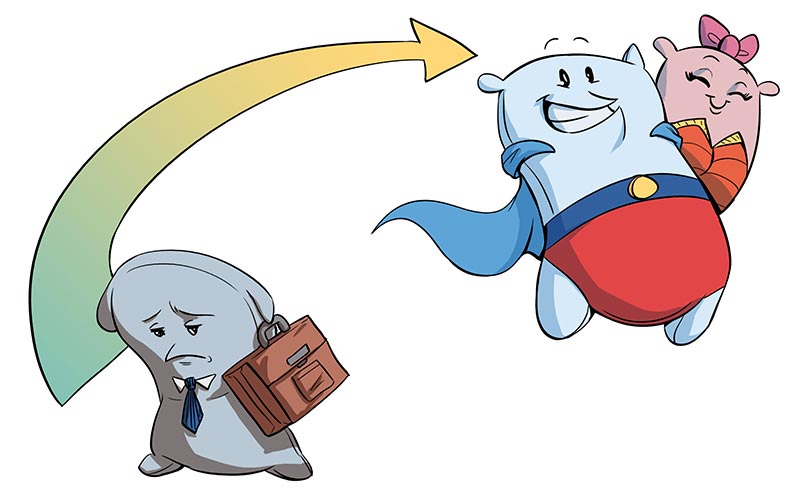
In the Quick Arc, a character goes through a sped-up version of a traditional film story arc, using the classic 3 act structure. That character arc could be a positive arc, in which the character has changed for the better (Mr. Hublot), a flat arc, in which the character stay the same but they have changed the world around them (Purl), or a Negative arc, in which the character had changed for the worse.
They start in The Normal World, and quickly encounter an Inciting Incident (a call-to-action) which challenges their way of life and force them to act.
They go through different Trials, trying to handle the situation they way they've always handled things, and that's not going to work for them. They will fail. But then (usually at the film's mid-point) they reach a Breakthrough.
They figured out what to do, and do it. It looks like things are then starting to work out, but then the hero quickly learns that this was only a false victory (or false defeat). They reach a Low Point, throwing it all out the window.
Then the hero learns an important lesson, and is forced to either change or create change to get what they need. It is with that change that they reach the Resolution, and the film would (usually) end with the mirror image of that "normal world" from the beginning, introducing a whole New world. Our character will never be the same again.
These shorts are usually the ones that make you cry.
Genre characteristics:
- 1 main character
- Character goes through a full arc
- Traditional 3 act structure: 1) Normal World, 2) Inciting Incident 3) Trials 4) Breakthrough 5) Low Point 6) Resolution + New World
Example: Purl by Kristen Lester | Pixar
The film features 1 main main character, Purl, a female ball of yarn, who starts working in a predominantly male work environment (comically exaggerated in this film, with the amusing company name B.R.O Capital). Through the film, Purl tries fitting in. In doing so, she'll have to learn how much of herself is she willing to lose in the process.
Before reading further, make sure you watch the film.
This film follows the 3 act structure, and utilized a flat character arc.
ACT 1:
We start with the Normal World, in which B.R.O Capital is a male-dominant firm. The Inciting Incident happens right off the bat, as Purl (our yarn-ball protagonist) starts her new job at the firm and thrown into this foreign male environment. One she's not equipped to deal with.
ACT 2:
Purl tries to deal with this new world the only way she knows how, but that proves to be ineffective. She goes through numerous Trials, such as dealing with a homogeneous closed group of coworkers who find her odd and different, don't get her humor, think her business ideas are "too soft", and don't invite her to lunch.
She fails and gives up... or does she?
Breakthrough! (exactly half way through the film)
She comes up with a plan. If she can't beat them, join them! She alters her appearance and personality in order to fit in. And guess what? It works! They laugh at her (sexists) jokes, go for her (aggressive) business ideas, and invite her to Happy Hour drinks after work. They love her. She's one of the guys. But then -
ACT 3:
A new worker shows up. And she's just like Purl used to be. She realizes her victory is a false one. She changed, and not for the better. She sacrifices everything about herself just to fit in.
That's her Low Point. She's lost any part of who she was. But no more! She will not end up like the guys around her. She will take a stand and make a difference. She invites the new worker to come out with them. This surprises everyone, but they are forced to accept it. That was Purl's moment of Resolution. And now we enter the -
New World. A mirror image of the opening Normal World, in which we see a diverse work environment with a mixed bag of personalities and appearances where everyone feels accepted. Purl had changed the world around her for good.
Conclusion
As you can see, we went through these 3 acts very quickly (thus the name Quick Arc), but all the important beats are still there, and they are what makes the story work so well.
Other notable films in this genre:
- One Small Step
- Push
- Feast
- Purl
- Mr. Hublot
- Paperman
- The Fantastic Flying Books of Mr. Morris Lessmore
- Lavatory – Lovestory
- Boundin’
2. The Duel
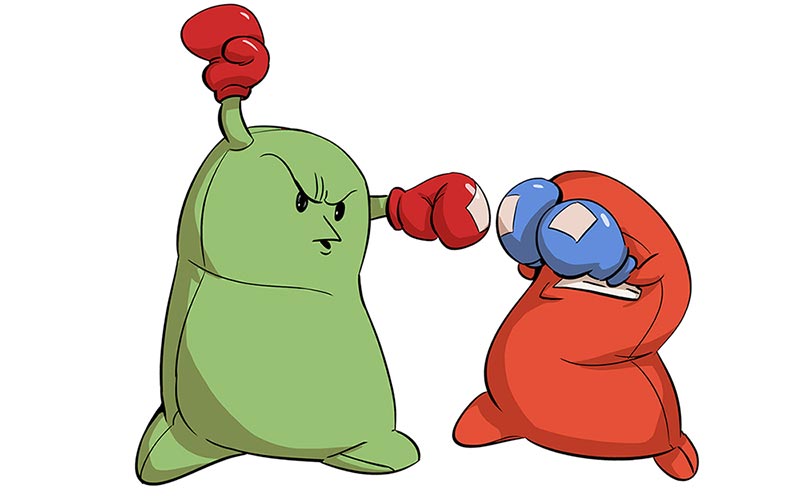
The Duel genre has two characters who are up against each other in one way or another. Either by trying to one-up each other (One Man Band), by learning to get along (Hair Love), or simply a fight for domination, with one winner and one loser (The Longest Daycare).
One important thing to note is that the protagonist(s) don’t change at the end. They might end up at a different place than where they started at, but it is their persistent personality that drives their actions and leads to their end result. They don’t go through a character arc. At best, they learn to live with the other character.
A typical Duel film starts with one character quickly being thrown into conflict with another character. Then they initially try to one up each other, or figure out a way to work together, or simply fight, until their conflict gets resolved by either getting along, or a clear win/defeat.
Genre characteristics:
- Two characters against each other
- The resolution is about how the conflict between them gets resolved, and not about how they change individually.
Example: The Longest Daycare by David Silverman | Fox
This film features Maggie Simpson on a particularly rough day at daycare, where she faces a bully who aims to kill her butterfly. If she is to save her new pet, she must use all her wit and cunning.
Before reading further, make sure you watch the film.
The film opens with Maggie quickly thrown into the lion's den that is daycare, where she immediately is greeted by the class bully - A kid who likes to kill butterflies. She then finds a caterpillar, and the bully shows up right away with his big hammer.
She then goes through a short sequence of avoiding the bully (including camouflaging the caterpillar as her eyebrow to get passed him, an act of foreshadowing to what she'll do at the end of the film). As Maggie learns that her caterpillar will soon turn into a butterfly, she transitions to a full-on chase sequence, trying to run away from him. This is the Duel part of the film.
This duel is then resolved with the bully supposedly killing her butterfly, followed by an overdramatic crying scene she performs, and as she leaves with her mom we get to see her clever plan unfolds, as what she left behind was in fact her hair tie, not the butterfly. Thus, she won the duel.
Conclusion
The Duel doesn't have to be a fight to the "death", like the example above. In One Band Man, the two performers both end up losing, as their one-upmenship cost them their hard earned coin. Our very own Tasteful has a similar resolution, with both the fish and the pig working together, miserably, and still get criticized by an unhappy customer at the end. Partly Cloudy ends with the two partners learning to work together despite the difficulties.
The main point of this genre is the conflict between two characters, without any of them changing at the resolution, regardless of the way we chose to resolve it.
Other notable films in this genre:
- Attack Of The Potato Clock
- Tasteful
- One Man Band
- Lift Up
- Hair Love
- La Luna
- Presto
- Lorenzo
- For the Birds
- The Controller
- Partly Cloudy
- Oktapodi
- Rebooted
- The Lady and the Reaper (La Dama y la Muerte)
3. The Saturday Morning Cartoon
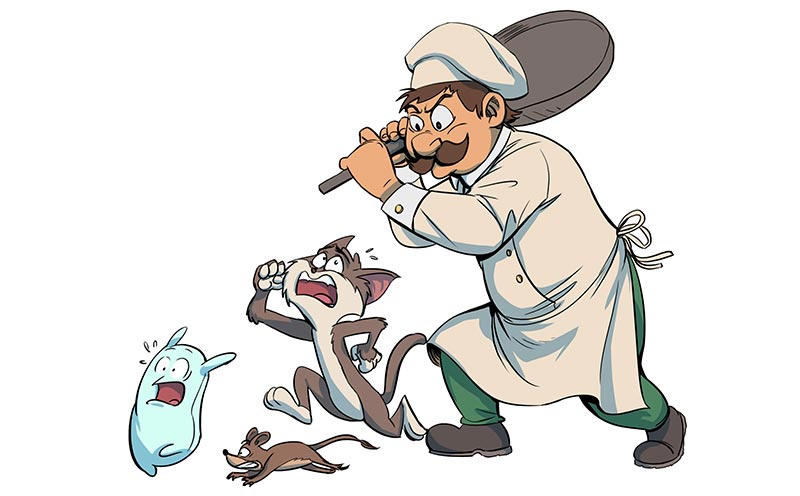
This type of short features a single character driven by one single motivation. A one-track mind.
They usually want to either get something or get out of a situation, usually in a humorous way with cartoon-like antics.
Change isn't an issue for these type of films, as the character isn't any different at the end than they were when they started. It's about watching them go through hell and back trying to get what they want.
The name of this genre is taken from traditional old-fashioned cartoons (like Looney Tunes) which featured that style of short filmmaking often.
Think about Wile E. Coyote trying to capture the Road Runner. Every short is the same, and Coyote only cares about one single thing: catching the Road Runner. He never changes, and never waivers. The same goes for Pinky and the Brain (taking over the world) or Pepé Le Pew (finding love).
Though many of these characters interact with a secondary character (like the Road Runner or Tweety) I don't consider it a Duel because the two character don't end up with any kind of resolution. They don't get closer, learn to live together, or beat one another in any final way. In this case, the secondary character is simply the obstacle our main character tries to overcome over and over again.
Genre characteristics:
- One single-minded character
- Focus on getting something, or getting out of something.
Example: Gone Nutty by Carlos Saldanha | Blue Sky
Gone Nutty is the classic embodiment of the Saturday Morning Cartoon genre. It features Scrat, a single-minded prehistoric rodent, who's trying to store his nuts.
Before reading further, make sure you watch the film.
Through the entire film, we see him struggle against the environment, as his attempts of holding on to his nuts constantly fail, and he gets into worse and worse situations. He then proceeds to lose them all, and find himself helplessly stranded on a block of ice floating in the water.
Scrat has no other motives or objectives in his existent, other than getting and storing his nuts. He doesn't change, he doesn't learn. He simply and consistently pursues his goal, no matter the consequences.
Conclusion
This genre can often be confused with the Duel, as they both feature a character in a constant conflict with something. The main difference is that in the Duel, both characters reach a resolution together (win/lose, or learn to get along) while the SMC genre character faces the world on its own, driven by one simple goal.
Other notable films in this genre:
- Misguided
- Possessions - Shuhei Morita
- French Roast
- This Way Up
- Lifted
- No Time for Nuts
- Badgered
- Gopher Broke
- Gone Nutty
- Mike’s New Car
- Stubble Trouble
- Knick Knack
- Ormie
4. Story Time
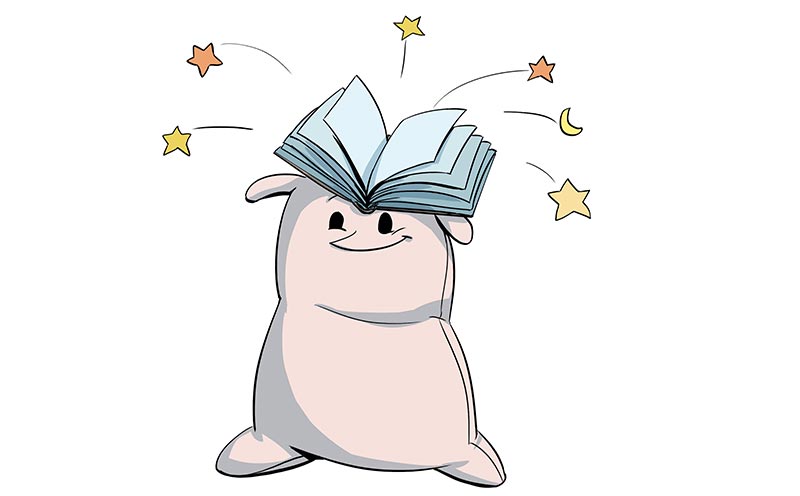
Story Time films focus on capturing a moment in time (often narrated throughout), or a segmented story that doesn't have an apparent character arc or any major transformation.
The story is often told at us, rather than presented to us through the action of the characters in the film, similar to an animated bed time story, with a clear storyteller taking us through the journey.
It could be a poem (Dear Basketball), an informational film (Your Friend the Rat), a small concept piece of what could be a feature film if developed further (The Dam Keeper), or a short story about a childhood memory (Negative Space).
The main distinction with this genre, compared to Quick Arc, is that it's not about the character arc or the plot, but about sharing a short story with the viewers in an interesting way, and while a character arc could sometime occur, this genre usually doesn't need high conflict or resolution. It's a window into one's soul or thoughts.
Genre characteristics:
- The story is told at us, rather than shown to us through the action of the film
- More similar to a bed-time story than a traditional film
- Often narrated
Example: Negative Space by Max Porter & Ru Kuwahata | Tiny Inventions
This short is based on a poem by Ron Koertge, and it tells the story of a kid remembering his father through their experience of masterfully packing a suitcase.
Before reading further, make sure you watch the film.
The film exemplify the Story Time genre perfectly. It throws us into the story right away, without much of an exposition or setup. There's no inciting incident or any of the other elements of the 3 act structure. It simply relays a kid's memory of his dad teaching him how to pack a suitcase, and what it meant to him.
Through the reading of the poem (narrated over the whole film) we cut between scenes depicting parts of that memory, and scenes of the protagonist making his way to what we learn at the end is his dad's funeral.
Conclusion
This short is a great example of what the Story Time genre does so well: Shows us a window into one's world. Me and My Moulton does that with a childhood memory of a young girl, Ryan does that in a documentary style way using interviews, and The Lost Thing does it with a completely fictional story.
Some of the films in that genre has Quick Arc elements in them (like Why Z or Pinky Toe), in which the protagonist goes through the character arc stages, but the unique format of the Story Time genre is what distinguishes it from the rest.
Other notable films in this genre:
- Winston
- Borrowed Time
- World of Tomorrow
- We Can't Live Without Cosmos
- Me and My Moulton
- The Dam Keeper
- Dimanche/Sunday
- Wild Life
- Pear Cider and Cigarettes
- The Lost Thing
- Let’s Pollute
- To This Day
- Dear Basketball
- Why Z
- La Maison en Petits Cubes
- I Met the Walrus
- The Danish Poet
- Ryan
- Birthday Boy
- Vincent
- Nibbles
- Mr. Head
- Give Up Yer Aul Sins
- Father and Daughter
- Red’s Dream
- Feral
- Adam and Dog
- Pinky Toe
5. High Concept
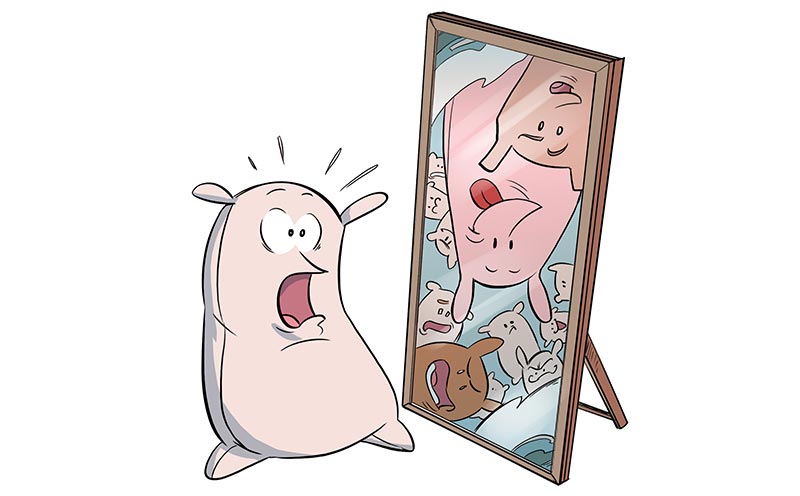
A High-Concept film utilizes some kind of interesting and unique concept, usually a visual one. A form of magical element or world-rule that is expressed prominently through the film.
This genre is often blended with other genres, but the main focus and attraction of this kind of film is that unique special element. When people talk about that film, they will use that twist to describe it. "That film where the husband and wife are on separate gravity fields" (Head Over Heals).
The Best example f0r this genre is Pixar's Day & Night, where two characters interact in a "Duel" type of story, but the main selling point of this film is the fact that the characters themselves are used as our window to the scenery behind them, and to top that, they each show different times of the day through their bodies. Now that's High-Concept.
Genre characteristics:
- One unique element or rule (usually visual) that is featured through the film
Example: A Single Life | Job, Joris & Marieke
A single Life tells the story of a young woman who finds that she can go forward and backwards in time using a vinyl record.
Before reading further, make sure you watch the film.
This film focuses on one unique rule (or element) in the character's world, which is the magical record that can shift time around. There's no exposition or character development, the film is all about that one record, and how the woman plays around with it until she accidents overdoes it and ends up in an urn.
Conclusion
While this film used a physical object as the unique element, there's many other ways of doing it. I mentioned Day & Night's use of their silhouettes as the window to the film, but Reflection did it by using a copy of the character only shown in reflections to portray her inner self. Fresh Guacamole used military objects that look like food in preparing a bowl of guac, and Logorama featured a whole world made out of logos, while showing a pretty standard action chase sequence.
The main thing to note about this genre is that the unique element takes a front seat as the main focus point of the film, while the plot and characters revolve around it to tell the best story possible.
Other notable films in this genre:
- Reflection (also Quick Arc)
- Night and Day (also Duel)
- Extinguished (also Saturday Morning Cartoon)
- Get a Horse (also Duel)
- Fresh Guacamole
- Head Over Heals (also Duel)
- A Morning Stroll
- Logorama (also Sketch)
6. The Sketch
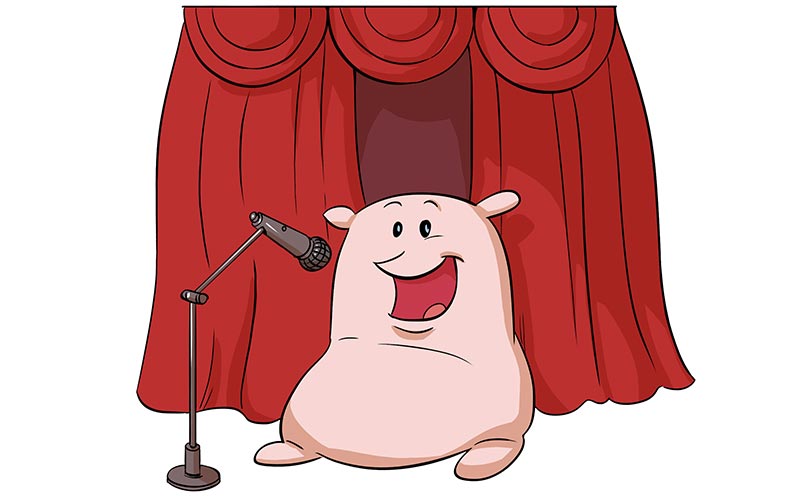
You got an idea for a funny sketch, and that’s what this genre is all about. There doesn't have to be much of a story or a character arc (though there could be), but the main point behind this type of film is a certain funny idea or situation the creator had.
A great way to end up with a Sketch type film, is to ask "What if...?"
What if we took plain interviews with plain people and animated zoo animals to them (Creature Comforts)? or what if a dog ran a therapy group with a bunch of very different animals (Animal Behavior)?
Genre characteristics:
- It's a sketch. One you might expect to see on shows like SNL or Portlandia.
Example: Animal Behavior by Alison Snowden and David Fine
Animal Behavior portrays an entire group therapy session for different animals, ran by a dog.
Before reading further, make sure you watch the film.
This film is what the Sketch genre is all about. It's funny, it's absurd, and it doesn't seem to go anywhere in particular, other than amuse us further. We get to see a great answer to the "What if" question presented to us at the start of the film. What if a dog ran a therapy group for a bunch of different animals? No one changes in particular, and we're definitely not thinking about 3 acts. It's just about plain old fun. And maybe some deep insights into our true nature as animals (watch the film and you'll know what I mean).
Other notable films in this genre:
- Granny O'Grimm's Sleeping Beauty
- The ChubbChubbs! (Also Saturday Morning Cartoon)
- Das Rad
- Rejected (Also High Concept)
- Kort maar krachtig / Short but sweet
7. The Twist
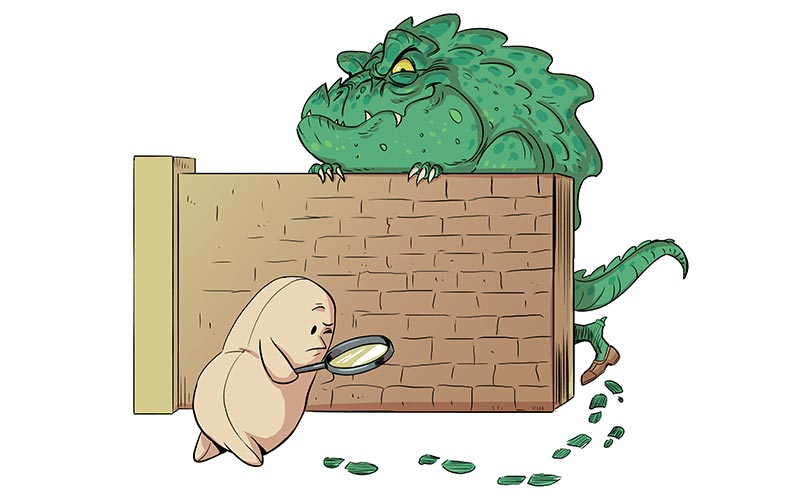
A film in which you have to get to the end of it to understand its point. There's either a big twist, which brings a new light to everything we've watched so far (Maestro), or we realize that the story actually loops in a certain way (Food for Thought).
Genre characteristics:
- A surprise ending that brings new light to everything we've watched up to that point.
Case study breakdown: Maestro by Geza M. Toth | KEDD Animation Studio
Five minutes before the big performance Maestro is getting ready behind the curtain. Time is slowly ticking away.
Before reading further, make sure you watch the film.
Through the entire over 4 minutes of watching this film, we keep asking ourselves "what's going on here?". It looks like a performer getting ready for a show, but as the film progresses, and the preparation prolongs, we wonder what could possibly happen at the end, which now has only a few seconds to happen?
Then it happens, and the film is over. The big twist is, of course, that our protagonist is actually a bird in a cuckoo clock, and his performance takes exactly 2 seconds before it's over. It's a clever idea and is well executed.
Conclusion
Not all films in this genre must confuse us throughout. In our own Food For Thought, it starts out as a pretty standard film, throwing our protagonist in a scary situation. It's only at the end that we realize the fish are just food for the spider crab. In The Present, all we see is an obnoxious child ignoring a poor 3 legged dog. It's only at the end that we understand what was the purpose of this present, and what the kid was going through. In The Falling, we realize that the entire film, in fact, loops.
The main point of the Twist film is that it's those last few moments that will reveal the point of the entire film.
Other notable films in this genre:
8. Weird / Abstract / No Point
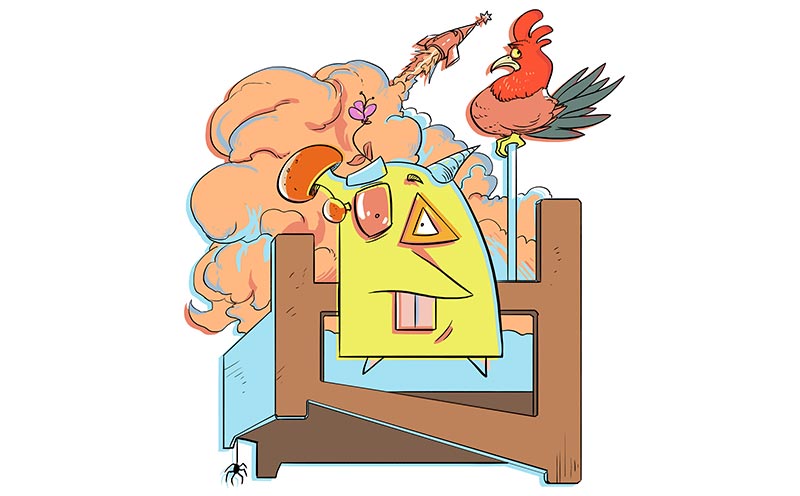
This genre doesn't have an apparent point or message, but rather could be a part of a bigger story (that we simply didn’t get to see), or demonstrate some kind of artistic style or technology. Some are just a form of experimental, abstract or impressionistic expression of the artist, using the animation medium as the canvas.
These are usually those films in which after there's a long silence and lots of confused faces.
Genre characteristics:
- An abstract / experimental form of storytelling
- No apparent message or resolution
Case study breakdown: Prologue by Richard Williams
Prologue was intended to be the first part of a planned feature film based on the play Lysistrata. It depicts a gruesome battle between four fighters.
Before reading further, make sure you watch the film.
Prologue is a masterpiece of hand-drawn animation. Created by animation master Richard Williams, the film shows an entire battle in one long shot, animated in a virtuoso kind of way, flying around and in between the characters as the fight.
Story doesn't seem to exist much in this film, as it was intended to be a part of a much bigger project, so as it stands it simply shows an amazing demonstration of the animation art form, but no story or character.
Conclusion
The "No Point" part of the name isn't meant in a derogatory way. It's simply pointing out that there isn't a traditional story point to the film. A conclusion or resolution of any kind. This approach can leave some viewers with that sense of "what was that?" Or "What was the point here?", but that is normal as the audience's expectations from films are pretty set, and breaking them often created confusion and disinterest.
This isn't said to discourage filmmaker from making films like this, but only to put it in the right context as to what viewers might experience watching them.
Other notable films in this genre:
- CAGE‘ 折枝
- Madame Tutli-Putli
- Destino
- Katedra (The Cathedral)
Final thoughts
Congrats for making it to the end of our short film structure guid, I hope you learned something from watching these films and going through our breakdowns, or at least had fun doing so.
Wanna learn more about making animated shorts?
We've designed a course specifically tailored to aspiring animation filmmakers interested in making their own animated short film.
After taking this course you will have complete understanding of the entire process of making an animated short film from start to finish, and will be able to take the next steps to making your own movie a reality.

